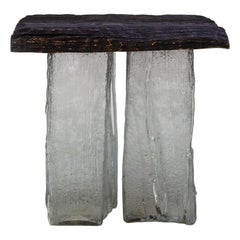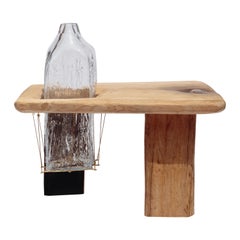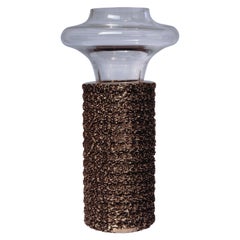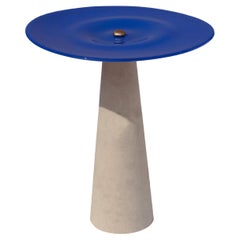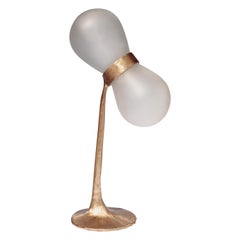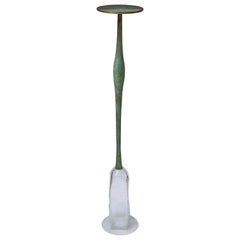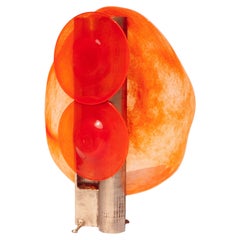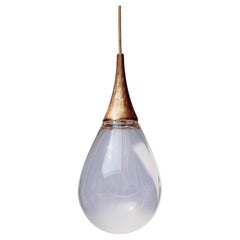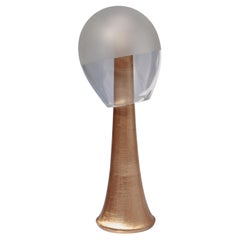Vincent Dubourg
Madeira Table by Clément Thevenot
Located in Geneve, CH
Archipel project.
In 2020, the duo worked alongside Vincent Dubourg as part of an internship. It was an
Category
2010s French Post-Modern Tables
Materials
Bronze
Mixtura Table by Clément Thevenot
Located in Geneve, CH
worked alongside Vincent Dubourg as part of an internship. It was an important experience in their career
Category
2010s French Post-Modern Tables
Materials
Brass, Bronze
Bonanza Vase by Clément Thevenot
Located in Geneve, CH
Archipel project.
In 2020, the duo worked alongside Vincent Dubourg as part of an internship. It was an
Category
2010s French Post-Modern Vases
Materials
Bronze
Areia Support by Clément Thevenot
Located in Geneve, CH
will be the genesis of the Archipel project.
In 2020, the duo worked alongside Vincent Dubourg as part
Category
2010s French Post-Modern Figurative Sculptures
Materials
Concrete, Bronze
Bacupari Lamp by Clément Thevenot
Located in Geneve, CH
project.
In 2020, the duo worked alongside Vincent Dubourg as part of an internship. It was an important
Category
2010s French Post-Modern Floor Lamps
Materials
Bronze
Fêle Floor Lamp by Clément Thevenot
Located in Geneve, CH
2020, the duo worked alongside Vincent Dubourg as part of an internship. It was an important experience
Category
2010s French Post-Modern Floor Lamps
Materials
Bronze
Madrugada Table Lamp by Clément Thevenot
Located in Geneve, CH
Archipel project.
In 2020, the duo worked alongside Vincent Dubourg as part of an internship. It was an
Category
2010s French Post-Modern Table Lamps
Materials
Bronze
Maracujà Pendant Lamp by Clément Thevenot
Located in Geneve, CH
will be the genesis of the Archipel project.
In 2020, the duo worked alongside Vincent Dubourg as part
Category
2010s French Post-Modern Chandeliers and Pendants
Materials
Bronze
Mangaba Table Lamp by Clément Thevenot
Located in Geneve, CH
will be the genesis of the Archipel project.
In 2020, the duo worked alongside Vincent Dubourg as part
Category
2010s French Post-Modern Table Lamps
Materials
Bronze
Get Updated with New Arrivals
Save "Vincent Dubourg", and we’ll notify you when there are new listings in this category.
Vincent Dubourg For Sale on 1stDibs
Choose from an assortment of styles, material and more with respect to the vincent dubourg you’re looking for at 1stDibs. Frequently made of bronze, glass and metal, every vincent dubourg was constructed with great care. You’ve searched high and low for the perfect vincent dubourg — we have versions that date back to the 20th Century alongside those produced as recently as the 21st Century are available. You’ll likely find more than one vincent dubourg that is appealing in its simplicity, but André Lanskoy produced versions that are worth a look.
How Much is a Vincent Dubourg?
Prices for a vincent dubourg can differ depending upon size, time period and other attributes — at 1stDibs, they begin at $1,297 and can go as high as $93,081, while the average can fetch as much as $26,929.
More Ways To Browse
Cassetti Renzo
Cassina Auckland
Cassina Plana
Cast Iron Shelving Unit
Cast Stone Basket Planter
Cement Trough
Cera Old World
Cera Presidential
Ceramic Blue Oblong Large
Ceramic Carolers Vintage
Ceramic Dog Whippet
Ceramic Evil Eye
Ceramic Gnome
Cesar Baldaccini Daum
Ceylan Vase
Chalk Statue
Chambron Elmyre
Champagne Bucket Magnum
